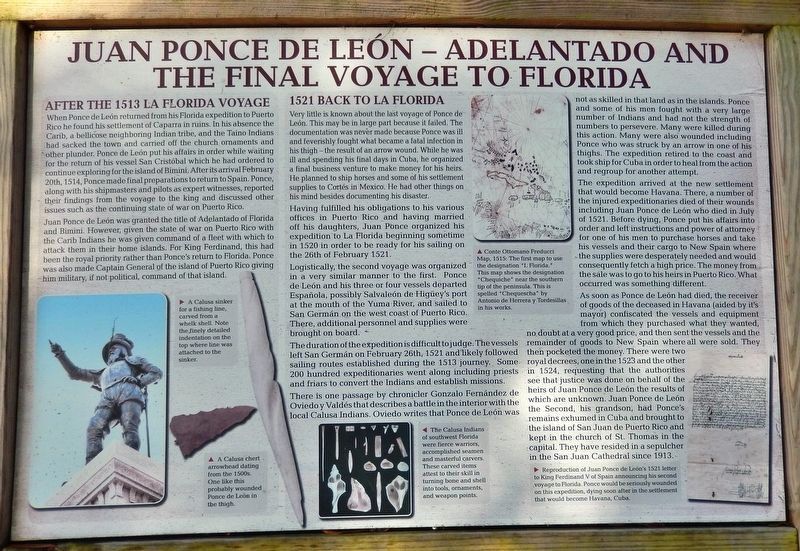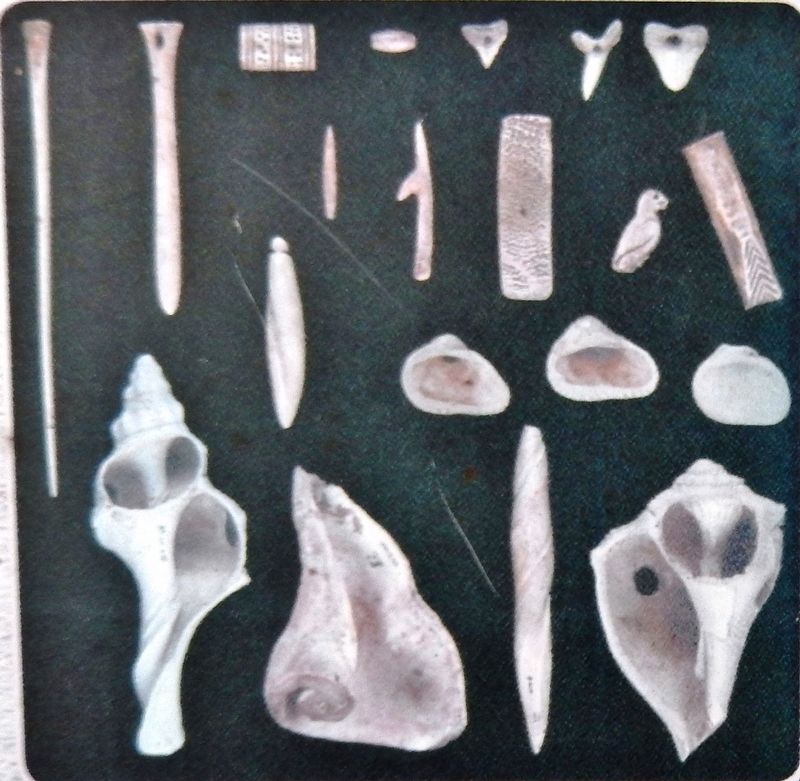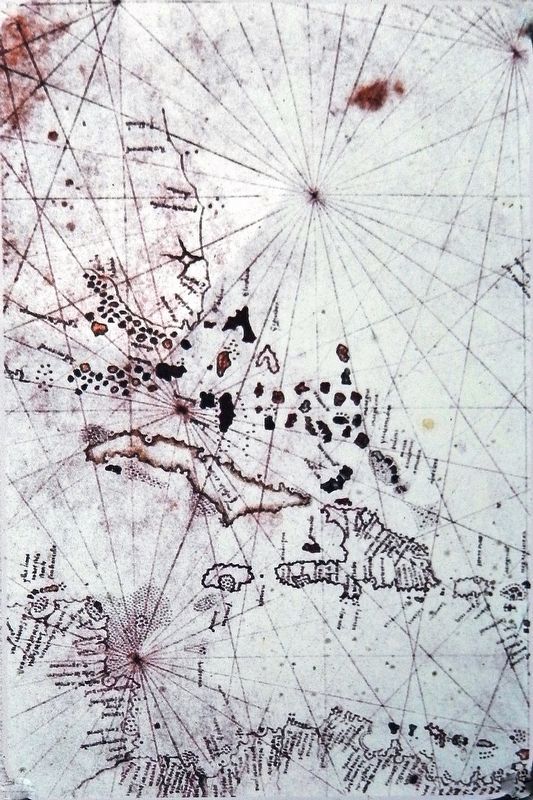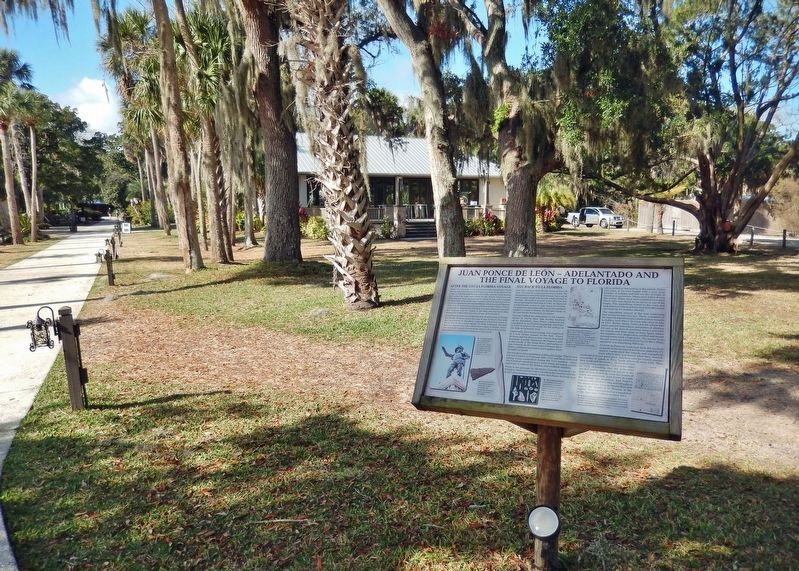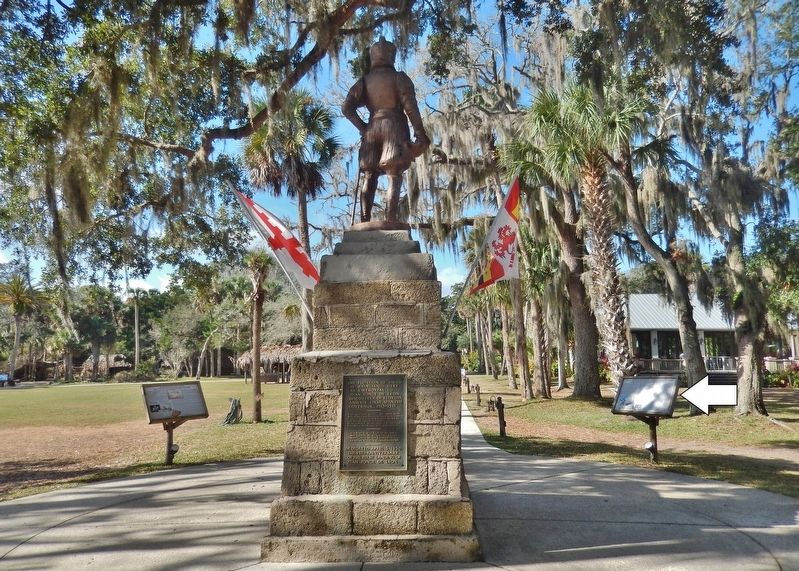Historic District in St. Augustine in St. Johns County, Florida — The American South (South Atlantic)
Juan Ponce De León
Adelantado and the Final Voyage to Florida
After the 1513 La Florida Voyage
When Ponce de León returned from his Florida expedition to Puerto Rico he found his settlement of Caparra in ruins. In his absence the Carib, a bellicose neighboring Indian tribe, and the Taino Indians had sacked the town and carried off the church ornaments and other plunder. Ponce de León put his affairs in order while waiting for the return of his vessel San Cristóbal which he had ordered to continue exploring for the island of Bimini. After its arrival February 20th, 1514, Ponce made final preparations to return to Spain. Ponce, along with his shipmasters and pilots as expert witnesses, reported their findings from the voyage to the king and discussed other issues such as the continuing state of war on Puerto Rico.
Juan Ponce de León was granted the title of Adelantado of Florida and Bimini. However, given the state of war on Puerto Rico with the Carib Indians he was given command of a fleet with which to attack them in their home islands. For King Ferdinand, this had been the royal priority rather than Ponce's return to Florida. Ponce was also made Captain General of the island of Puerto Rico giving him military, if not political, command of that island.
1521 Back to La Florida
Very little is known about the last voyage of Ponce de León. This may be in large part because it failed. The documentation was never made because Ponce was ill and feverishly fought what became a fatal infection in his thigh — the result of an arrow wound. While he was ill and spending his final days in Cuba, he organized a final business venture to make money for his heirs. He planned to ship horses and some of his settlement supplies to Cortés in Mexico. He had other things on his mind besides documenting his disaster.
Having fulfilled his obligations to his various offices in Puerto Rico and having married off his daughters, Juan Ponce organized his expedition to La Florida beginning sometime in 1520 in order to be ready for his sailing on the 26th of February 1521.
Logistically, the second voyage was organized in a very similar manner to the first. Ponce de León and his three or four vessels departed Española, possibly Salvaleón de Higüey's port at the mouth of the Yuma River, and sailed to San Germán on the west coast of Puerto Rico. There, additional personnel and supplies were brought on board.
The duration of the expedition is difficult to judge. The vessels left San Germán on February 26th, 1521 and likely followed sailing routes established during the 1513 journey. Some 200 expeditionaries went along including priests and friars to convert the Indians and establish missions.
There is one passage by chronicler Gonzalo
Fernández de Oviedo y Valdés that describes a battle in the interior with the local Calusa Indians. Oviedo writes that Ponce de León was not as skilled in that land as in the islands. Ponce and some of his men fought with a very large number of Indians and had not the strength of numbers to persevere. Many were killed during this action. Many were also wounded including Ponce who was struck by an arrow in one of his thighs. The expedition retired to the coast and took ship for Cuba in order to heal from the action and regroup for another attempt.
The expedition arrived at the new settlement that would become Havana. There, a number of the injured expeditionaries died of their wounds, including Juan Ponce de León who died in July of 1521. Before dying, Ponce put his affairs into order and left instructions and power of attorney for one of his men to purchase horses and take his vessels and their cargo to New Spain where the supplies were desperately needed and would consequently fetch a high price. The money from the sale was to go to his heirs in Puerto Rico. What occurred was something different.
As soon as Ponce de León had died, the receiver of goods of the deceased in Havana (aided by its mayor) confiscated the vessels and equipment from which they purchased what they wanted, no doubt at a very good price, and then sent the vessels and the remainder of goods
to New Spain where all were sold. They then pocketed the money. There were two royal decrees, one in 1523 and other in 1524, requesting that the authorities see that justice was done on behalf of the heirs of Juan Ponce de León the results of which are unknown. Juan Ponce de León the Second, his grandson, had Ponce's remains exhumed in Cuba and brought to the island of San Juan de Puerto Rico and kept in the church of St. Thomas in the capital. They have resided in a sepulcher in the San Juan Cathedral since 1913.
[photo captions]
• A Calusa sinker for a fishing line, carved from a whelk shell. Note the finely detailed indentation on the top where line was attached to the sinker.
• A Calusa chert arrowhead dating from the 1500s. One like this probably wounded Ponce de León in the thigh.
• Reproduction of Juan Ponce de León’s 1521 letter to King Ferdinand V of Spain announcing his second voyage to Florida. Ponce would be seriously wounded on this expedition, dying soon after in the settlement that would become Havana, Cuba.
Topics. This historical marker is listed in these topic lists: Colonial Era • Exploration • Native Americans • Waterways & Vessels. A significant historical year for this entry is 1521.
Location. 29° 54.424′ N, 81° 18.863′ W. Marker is in St. Augustine, Florida, in St. Johns
County. It is in the Historic District. Marker can be reached from Williams Street east of Magnolia Avenue when traveling east. Marker is located along the interpretive trail in Ponce de León's Fountain of Youth Archaeological Park. Touch for map. Marker is at or near this postal address: 11 Magnolia Avenue, Saint Augustine FL 32084, United States of America. Touch for directions.
Other nearby markers. At least 8 other markers are within walking distance of this marker. Juan Ponce De Leon (here, next to this marker); The Fountain of Youth (a few steps from this marker); a different marker also named Juan Ponce De León (a few steps from this marker); a different marker also named Juan Ponce De León (a few steps from this marker); a different marker also named Juan Ponce De León (a few steps from this marker); The Matchlock Arquebus (within shouting distance of this marker); Archaeology of the Menéndez Encampment (within shouting distance of this marker); The Menéndez Settlement Field (within shouting distance of this marker). Touch for a list and map of all markers in St. Augustine.
Related markers. Click here for a list of markers that are related to this marker. Ponce de León's Fountain of Youth Archaeological Park
Also see . . . Juan Ponce De León.
Juan Ponce de León is credited as the first European known to have visited present day United States. He was also Puerto Rico’s first governor. Although he was never able to establish a colony in Florida, his discovery of the land led to continued Spanish exploration of the Americas. After his death, more and more Spanish explorers wanted to sail west to explore Florida. Many of the colonies he set up in Puerto Rico survived long after his death, and his influence is still known throughout the area. Ponce, Puerto Rico’s third largest city, is named in his honor.(Submitted on December 22, 2021, by Cosmos Mariner of Cape Canaveral, Florida.)
Credits. This page was last revised on December 29, 2021. It was originally submitted on December 20, 2021, by Cosmos Mariner of Cape Canaveral, Florida. This page has been viewed 333 times since then and 42 times this year. Photos: 1, 2, 3, 4, 5. submitted on December 22, 2021, by Cosmos Mariner of Cape Canaveral, Florida.
